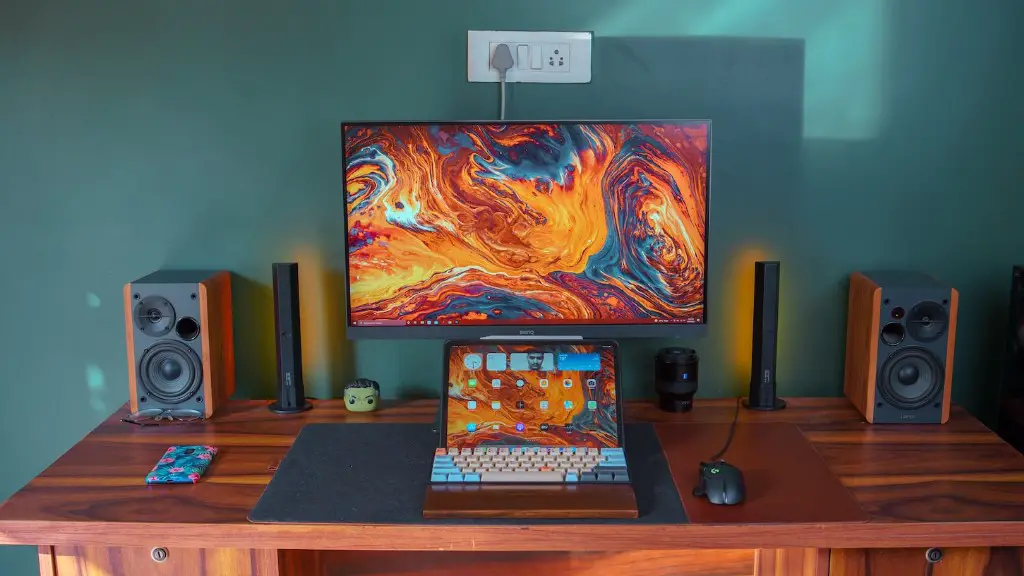Installing an SSD into a gaming PC is becoming more common, as the technology has advanced to a point where it can easily handle gaming loads. One of the main advantages of an SSD over a hard drive is the dramatic speed increase. It can give your gaming PC a real boost, both in speed and performance. This guide will explain the basic steps you need to take when installing an SSD into your gaming PC.
Step One: Gather the Necessary Parts
The first step in installing an SSD into your gaming PC is to make sure you have the necessary parts. You’ll need an SSD drive, compatible interface, Phillips screwdriver, cable ties and a SATA or PCIe adapter. Additionally, you’ll need to use a compatible mounting bracket for the drive, if necessary, and the appropriate screws for the mounting. Once you have all the parts you need, you can move on to the next step.
Step Two: Install the SSD
Next, you’ll need to install the SSD into your gaming PC. Start by removing the side panel of your PC, then locate an empty 3.5 inch drive bay. If your case doesn’t have one, you’ll need to purchase an adapter. Once you have an available drive bay, mount the SSD in place using the appropriate mounting screws. Once the SSD is firmly in place, you can attach the necessary data and power cables.
Step Three: Install the Operating System
Once the SSD is physically installed, the next step is to install the operating system. Depending on your system, you may need to use a bootable USB drive or optical disc. After inserting the bootable media, boot up your system and follow the instructions for installing the operating system. Be sure to select the SSD as the drive you want to install the operating system on.
Step Four: Adjust the BIOS Settings
After installing the operating system, you’ll need to adjust the BIOS settings to properly recognize the SSD. Reboot your system and enter the BIOS by pressing the appropriate key. Locate the menu for boot devices, and make sure the SSD is listed as a boot device. Set the SSD as the first boot device, then save your changes and exit the BIOS.
Step Five: Finalize the Installation
Once you’ve adjusted the BIOS settings, the installation of your SSD should be complete. Shut down your PC and replace the side panel. Once the side panel is back in place, turn on your PC and ensure that the SSD is recognized by the system. If everything checks out, then you’re ready to use your new SSD and reap the benefits it provides.
Optimizing Your SSD
Once your SSD is installed, there are a few things you can do to optimize its performance. First, you’ll want to make sure it’s properly configured in the BIOS. You’ll also want to make sure that the power settings for the drive are set to maximize performance. Additionally, you can adjust the drive’s partitioning, set the filesystem to optimize for SSDs, and enable the write cache for maximum performance.
Using An SSD for Games
Using an SSD for gaming provides significant performance benefits. Games will load faster, textures will be sharper and its overall response time will be greatly improved. The only downside is the cost, as SSDs are significantly more expensive than traditional hard drives. However, if you can afford the cost, the performance boost an SSD provides is definitely worth it.
Maintaining Your SSD
Once an SSD is installed, there are a few simple things you can do to maintain it and extend its lifespan. Firstly, you should be sure to use the correct type of cable for the SSD, as some have been known to cause performance issues with some models. Additionally, make sure to defragment your drive on a regular basis, as SSDs can become fragmented over time. Finally, you should also keep your drive updated with the latest drivers and firmware.
Installing An SSD Cache
Finally, you may want to consider installing an SSD cache on your gaming PC. An SSD cache allows you to store frequently used applications and games on the SSD, which can reduce load times and improve performance significantly. If you decide to install an SSD cache, make sure you have enough available space and that it is compatible with your PC.


